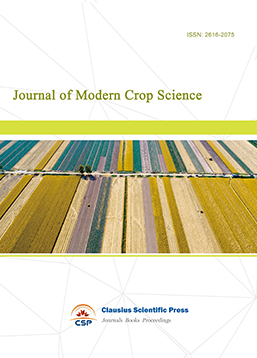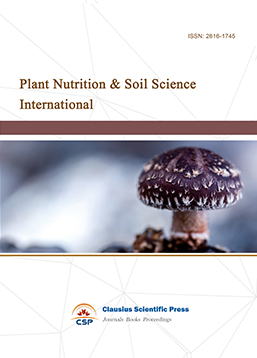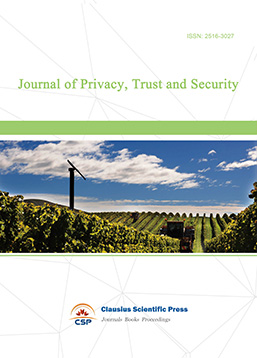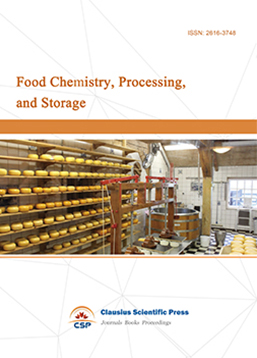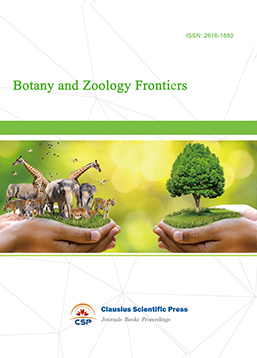Research Progress of Sustained-Release Hydrogels Based on 3D Printing Technology in the Food Industry
DOI: 10.23977/afshn.2024.060112 | Downloads: 26 | Views: 1243
Author(s)
Chenchen Wang 1
Affiliation(s)
1 The College of Food Science and Pharmacy, Xinjiang Agricultural University, Urumqi, 830052, China
Corresponding Author
Chenchen WangABSTRACT
3D printing technology is a new manufacturing technology based on digital model files, which constructs objects by printing layer by layer. As an advanced manufacturing method, it can realize the rapid prototyping of complex structures. Hydrogel prepared by 3D printing technology has a slow-release function, which can control the release rate of active ingredients (such as nutrients and probiotics) wrapped in it, and realize more accurate nutrition delivery or function play. Hydrogels come from a wide range of materials, including natural polysaccharides (such as sodium alginate and chitosan), protein materials (such as gelatin) and synthetic polymers. At present, 3D printed hydrogels have many important applications in functional food, fermented food, food structure customization and food packaging. In this paper, the material types of 3D printed hydrogels and their current applications in food industry are deeply summarized, aiming at providing valuable reference for the further application of 3D printed hydrogels in food industry and promoting the development of food industry in the direction of intelligence, personalization and high efficiency.
KEYWORDS
3D printing, hydrogel, slow-release function, food industry, fermentationCITE THIS PAPER
Chenchen Wang, Research Progress of Sustained-Release Hydrogels Based on 3D Printing Technology in the Food Industry. Advances in Food Science and Human Nutrition (2024) Vol.6: 84-91. DOI: http://dx.doi.org/10.23977/afshn.2024.060112.
REFERENCES
[1] NachalN, Moses JA, Karthik P, et al. Applications of 3D Printing in Food Processing [J]. Food Engineering Reviews, 2019, 11(3): 123-141.
[2] Grigoryan B, Paulsen S J, Corbett D C, et al. Multivascular networks and functional intravascular topologies within biocompatible hydrogels[J]. Science, 2019, 364: 458-464. DOI: 10. 1126/science. aav9750.
[3] Kelly B E, Bhattacharya I, Heidari H, et al. Volumetric additive manufacturing via tomographic reconstruction[J]. Science, 2019, 363: 1075-1079. DOI: 10. 1126/science. aau7114.
[4] Pant A, Lee A Y, Karyappa R, et al. 3D food printing of fresh vegetables using food hydrocolloids for dysphagic patients [J]. Food Hydrocolloids, 2021, 114: 106546.
[5] Motoki K, Park J, Spence C. Contextual acceptance of novel and unfamiliar foods: Insects, cultured meat, plant-based meat alternatives, and 3D printed foods[J]. Food Quality and Preference, 2022, 96: 104368.
[6] Di Renzo L, Gualtieri P, Romano L, et al. Role of personalized nutrition in chronic -degenerative diseases [J]. Nutrients, 2019, 11(8): 1707.
[7] Corrêa -Filho L C, Moldão -Martins M, Alves V D. Advances in the application of microcapsules as carriers of functional compounds for food products[J]. Applied Sciences, 2019, 9(3): 571.
[8] Nishimoto‐Sauceda D, Romero‐Robles L E, Antunes‐Ricardo M. Biopolymer nanoparticles: A strategy to enhance stability, bioavailability, and biological effects of phenolic compounds as functional ingredients [J]. Journal of the Science of Food and Agriculture, 2022, 102(1): 41-52.
[9] Zhu Qinlin, Li Ying. Application of hydrogel in drug sustained release [J]. Comparative Chemistry, 2018, 2(3): 109-113. https://doi. org/10. 12677/CC. 2018. 23013.
[10] Pourbadiei B, Adlsadabad S Y, Rahbariasr N, et al. Synthesis and characterization of dual light/temperature-responsive supramolecular injectable hydrogel based on host-guest interaction between azobenzene and starch-grafted β-cyclodextrin: Melanoma therapy with paclitaxel [J]. Carbohydrate Polymers, 2023, 313
[11] Felt, O., Buri, P. and Gurny, R.(1998) Chitosan: A Unique Polysaccharide for Drug Delivery. Drug Development and Industrial Pharmacy, 24, 979-993.
[12] Zhu Qinlin, Li Ying. Application of hydrogel in drug sustained release [J]. Comparative Chemistry, 2018, 2(3): 109-113.
[13] Henriksen I, Skaugrud Ø, Karlsen J. Use of chitosan and chitosan malate as an excipient in wet granulation of three water soluble drugs[J]. International journal of pharmaceutics, 1993, 98(1-3): 181-188.
[14] Felt O, Buri P, Gurny R. Chitosan: a unique polysaccharide for drug delivery[J]. Drug development and industrial pharmacy, 1998, 24(11): 979-993.
[15] Wahba M I. Enhancement of the mechanical properties of chitosan[J]. Journal of Biomaterials Science, Polymer Edition, 2020, 31(3): 350-375.
[16] Brownlee L A, Seal CJ, Wilcox M, et al. Applications of Alginates in Food. Heidelberg: Springer-Verlag, 2009: 4-5
[17] Yao Wenhao, Yu Fei, Ma Jie. Synthesis of Alginate composite gel adsorbent and its application in water treatment [J]. Progress in Chemistry, 2018, 30(11):1722-1733.
[18] Smith, J. A., & Brown, P.(2020). Mechanical properties of gelatin hydrogels for biomedical applications. Journal of Biomedical Materials Research, 108(3), 456-467.
[19] Zhang, Y., & Wang, X.(2021). Gelatin hydrogels as drug delivery systems. Advanced Drug Delivery Reviews, 165, 78-89.
[20] Tang Liangdong, Lin Minghao, Feng Yuxian, et al. Starch hydrogel drug sustained-release system: preparation, performance control and application [J/OL]. Journal of China Cereals and Oils, 1-8[2024-10-23]. https://doi. org/10. 20048/j. cnki. issn. 1003-0174. 000912.
[21] Maniglia B C, Lima D C, Junior M M D, et al. Hydrogels based on ozonated cassava starch: effect of ozone processing and gelatinization conditions on enhancing 3D-printing applications[J]. International Journal of Biological Macromolecules, 2019, 138: 1087- 1097.
[22] Liu Yuhua, Wei Hongliang, Li Songmao, et al. Research progress of starch-based hydrogels [J]. Progress in Chemical Engineering, 2021, 40(12): 6738- 6751. DOI:10. 16085/j. issn. 1000-6613. 2021-0099.
[23] Chen Yifan. Preparation and properties of cellulose nanocrystals/acrylic acid/acrylamide composite hydrogel [D]. Zhejiang A&F University, 2020. DOI: 10.27756/d.cnki.gzjlx.2020.000072.
[24] Li Yuanyuan, Dai Hongqi. Research progress in preparation of nano-microcrystalline cellulose by chemical method [J]. Journal of Nanjing Forestry University (Natural Science Edition) . 2012, 36 (005): 161-166.
[25] Peng B L, Dhar N, Liu H L, et al. Chemistry and applications of nanocrystalline cellulose and its derivatives: A nanotechnology perspective[J]. Canadian Journal of Chemical Engineering. 2011, 89(5): 1191 - 1206.
[26] Liu Yufan. Preparation and properties of 3D printable hyaluronic acid double network hydrogel [D]. tianjin polytechnic university, 2022. DOI:10. 27357/d. cnki. gtgyu. 2022. 000242.
[27] Kang L, Nana Z, Chenxi X, et al. Three-Dimensional Printing Properties of Polysacch aride Hydrocolloids–Unrinsed Sturgeon Surimi Complex Hydrogels[J]. Foods, 2022, 11(19):2947-2947.
[28] Ding Keying, Jin Jing, Ren Yu, et al. Research progress of 3D printing technology in food [J/OL]. Journal of Nanjing Agricultural University, 1-16 [July 19, 2024]. http://kns. cnki. net/kcms/detail/32. 1148. S. 20240603. 1128. 002. html.
[29] Zhang L, Lou Y M, Schutyser M A I. 3D printing of cereal-based food structures containing probiotics [J]. Food Structure-Netherlands, 2018, 18: 14-22.
[30] Li X Q, Fan L P, Li J W. Utilization of polysaccharide-based high internal phase emulsion for nutraceutical encapsulation and 3D printing: Reinforcement of curcumin stability and bioaccessibility [J]. Lwt-Food Science and Technology, 2023, 189.
[31] Rosas-Val P, Adhami M, Brotons-Canto A, et al. 3D printing of microencapsulated Lactobacillus rhamnosus for oral delivery [J]. International Journal of Pharmaceutics, 2023, 641.
[32] Nachal N, Moses AJ, Karthik P, et al. Applications of 3D Printing in Food Processing [J]. Food Engineering Reviews, 2019, 11(3): 123-141.
[33] Wang Jiangdong, Shuai Jingjing, Luo Shiyuan, et al. Effect of gelatin on 3D printing performance of yogurt [J]. Food and Fermentation Industry, 2021, 47(17):194-199. DOI: 10. 13995/j. cnki. 11-1802/ts. 027651.
[34] He C, Zhang M, Fang Z. 3D printing of food: Pretreatment and post-treatment of materials[J]. Critical Reviews in Food Science and Nutrition, 2020, 60(14): 2379-2392.
[35] Engineering - Food Engineering; Research Conducted at Korea University Has Updated Our Knowledge about Food Engineering (Callus-based 3d Printing for Food Exemplified With Carrot Tissues and Its Potential for Innovative Food Production)[J]. Food Weekly News, 2020,
[36] Maniglia, B. C. ; Lima, D. C. ; Junior MD, M. ; Le-Bail, P. ; Le-Bail, A. ; Augusto, P. E. Hydrogels based on ozonated cassava starch: Effect of ozone processing and gelatinization conditions on enhancing 3D-printing applications. Int. J. Biol. Macromol. 2019, 138, 1087–1097.
[37] Kumar, S.; Mukherjee, A. ; Dutta, J. Chitosan Based Nanocomposite Films and Coatings: Emerging Antimicrobial Food Packaging Alternatives. Trends Food Sci. Technol. 2020, 97, 196–209.
[38] Batista, R. A. ; Espitia, P. J. P. ; Quintans, J. d. S. S. ; Freitas, M. M. ; Cerqueira, M. Â. ; Teixeira, J. A. ; Cardoso, J. C. Hydrogel as an Alternative Structure for Food Packaging Systems. Carbohydr. Polym. 2019, 205, 106–116.
[39] Nan Xijun, Zhou Quancheng, Li Yajie, et al. Printability and applicability of chlorogenic acid hydrogel system under 3D printing processing load [J]. Food Science, 2023, 44(15):95-102.
[40] Le-Bail A, Maniglia B C, Le-Bail P. 3D printing of foods: recent developments, future perspectives and challenges [J]. Current opinion in food science, 2020.
| Downloads: | 2658 |
|---|---|
| Visits: | 94182 |

 Download as PDF
Download as PDF